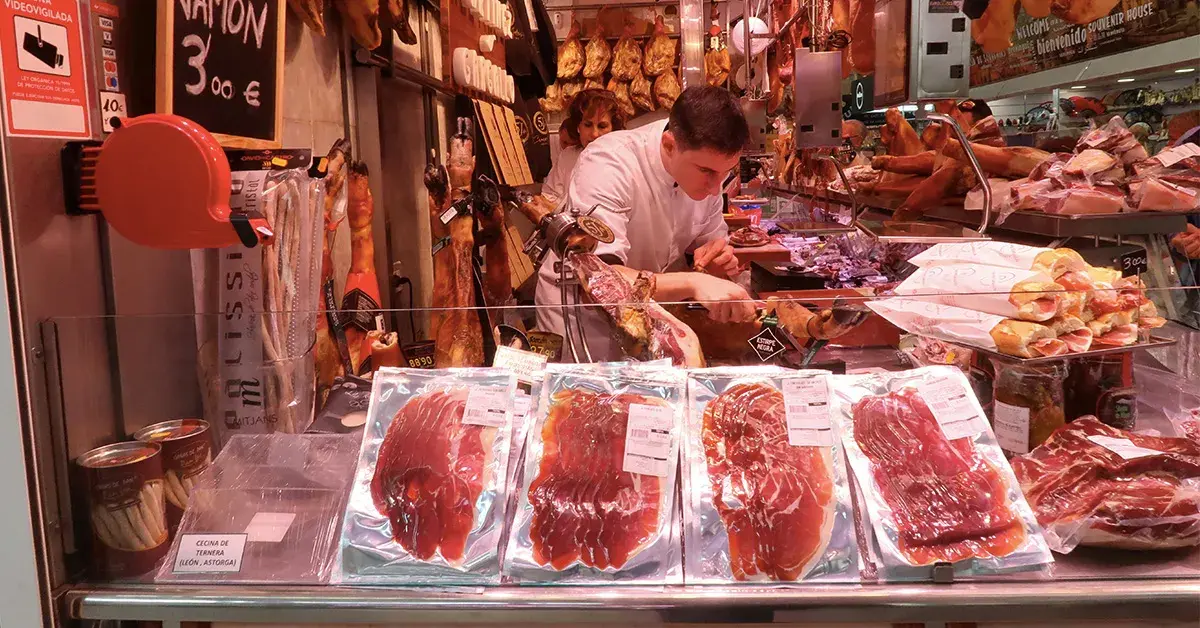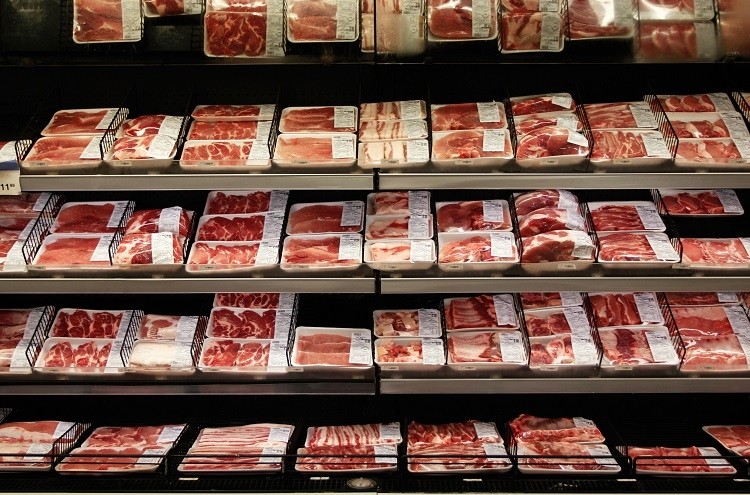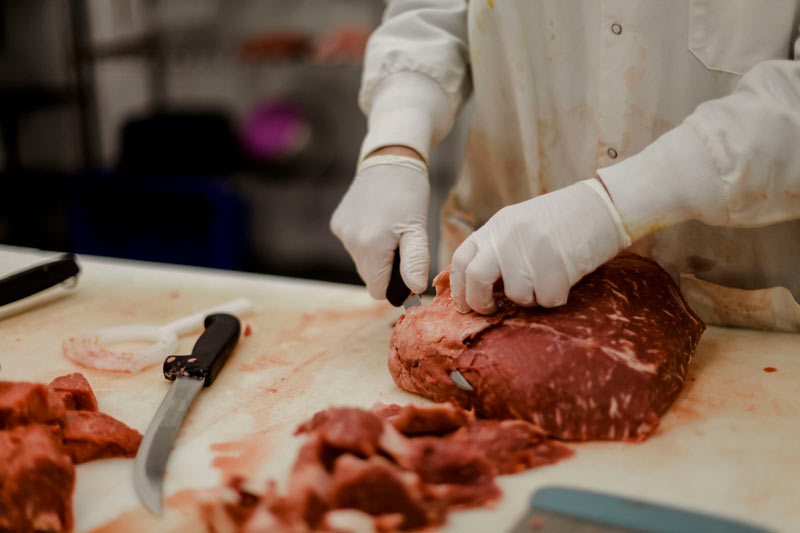Discover the Art of the Butcher's Cut in a Modern Meat Market
In the ever-evolving landscape of modern-day meat markets, the butcher's cut has actually transcended its conventional roots, merging age-old workmanship with contemporary methods. What truly sets the modern-day butcher apart is their capability to build a deeper connection in between customers and the origins of their meat.
Advancement of Butchery Methods

The mid-20th century saw butchery strategies better improved by clinical insights into muscular tissue biology and meat aging, boosting both tenderness and taste. Technologies like vacuum cleaner product packaging and refrigeration extended item shelf-life, permitting butchers to branch out offerings and improve top quality control. This duration also noted the increase of specialized equipment, such as band saws and meat slicers, which raised precision and efficiency in meat handling.
The 21st century has introduced electronic innovation right into the butchery world. Computerized systems currently help in tracking pet provenance and optimizing cuts to satisfy particular customer choices. Additionally, a rebirth in artisanal butchery has arised, mixing traditional abilities with modern expertise to cater to customers seeking moral and sustainable meat alternatives. This evolution underscores a vibrant interplay between practice and development, conference contemporary needs while preserving the craft's heritage.

Recognizing Meat Cuts

Recognizing the ins and outs of meat cuts is necessary for both butchers and customers seeking top quality and value. Each cut comes from a different part of the animal, imparting one-of-a-kind tastes, structures, and food preparation techniques. Mastery of these distinctions not just enhances culinary experiences however additionally makes the most of the utility of each carcass. For butchers, precise cuts mirror ability and respect for the craft, guaranteeing minimal waste and optimum return.
The key groups of meat cuts include primitive, sub-primal, and retail cuts. Primal cuts, such as the loin, rib, and chuck, are the huge sections initially divided from the carcass. Butchers then damage these down even more right into sub-primal cuts, before finally creating retail cuts available to customers, like ribeye or tenderloin. Each stage needs careful interest to physiological framework and muscle structure.
Comprehending muscular tissue composition is critical; muscle mass utilized more often by the pet tend to be harder and are best matched for slow cooking approaches, while less-used muscle mass, like those found in the loin, are much more tender and perfect for grilling or roasting. Familiarity with these differences encourages customers to make informed options, boosting their cooking endeavors.
Selecting Quality Meat
Selecting the best meat includes more than just choosing a visually attractive piece from the display. The art of selecting quality meat requires a discerning eye and knowledge of details characteristics that symbolize freshness and excellence. Pay attention to the shade; beef needs to have an intense, cherry-red color, while lamb ought to exhibit a soft pink tone, and pork a light pink. This shows the meat is fresh and hasn't been subjected to oxygen for as well long.
Secondly, take into consideration the marbling, which describes the white flecks of fat within the muscular tissue. Appropriate marbling is a key indication of tenderness and taste, as it melts during food preparation, enhancing the meat's juiciness. Bear in mind, higher marbling often associates with premium top quality cuts, such as USDA Prime.
Structure is an additional important element; meat needs to feel strong to the touch, not slimy or extremely soft. Additionally, bear in mind the scent. Fresh meat needs to have a clean, neutral odor, complimentary from any type of sour or off-putting odors.
Matching Cuts With Cooking Techniques
Efficiently pairing cuts of meat with the suitable cooking techniques is essential for achieving ideal flavor and structure. These approaches boost the meat's all-natural tastes and ensure a juicy finish.
On the other hand, harder cuts like brisket and chuck roast are rich in collagen, which breaks down into gelatin when cooked gradually. These cuts are perfect for braising or slow roasting, allowing the meat to tenderize her explanation in time and develop deep, complex tastes. Cuts such as short ribs and pork shoulder fare well with slow-cooking methods, where extended cooking times change their durable structures into succulent dishes.
Lamb shanks and oxtail, which call for extended food preparation to tenderize, are perfect prospects for cooking or sluggish simmering. These techniques coax out rich, passionate tastes while preserving wetness. By comprehending the distinct qualities of each cut, cooks and home chefs alike can raise their culinary productions, making certain each meal is both pleasing and remarkable.
The Butcher's Function Today
Navigating the advancing landscape of the contemporary meat market, the butcher's role today expands beyond mere prep work of cuts. Contemporary butchers are culinary craftsmens, teachers, and supporters for sustainable practices. They link the gap in between the farm and the fork by ensuring honest sourcing, understanding pet husbandry, and prioritizing openness in the supply chain. This shift mirrors the growing customer demand for top quality over quantity, where provenance and pet welfare are paramount.
In enhancement to crafting precise cuts, butchers now involve directly with clients, providing cooking suggestions and tailoring choices to match individual requirements and choices. Their expertise in meat aging, marbling, and flavor accounts encourages consumers to make educated choices, enhancing their culinary This Site experiences. This tailored service exemplifies the butcher's progressing duty as a trusted advisor in the cooking area.
Moreover, butchers are critical in lessening waste, making additional resources use of whole animals to produce diverse items such as sausages and supplies - bagley farms meat market edwardsville il. This thorough method not only appreciates the pet yet additionally aligns with contemporary sustainability goals. In this method, the modern-day butcher personifies both tradition and development, adapting to an ever-changing market while protecting the creativity and stability of their craft

Final Thought
Mastery in recognizing diverse meat cuts and high quality indicators equips butchers to give educated referrals, aligning details cuts with optimal cooking approaches. By honoring historical techniques while embracing contemporary demands, the butcher's duty remains crucial in today's innovative meat market.
Comments on “Bagley Farms Meat Market Edwardsville IL: Your Trusted Resource for High-Quality Meats”